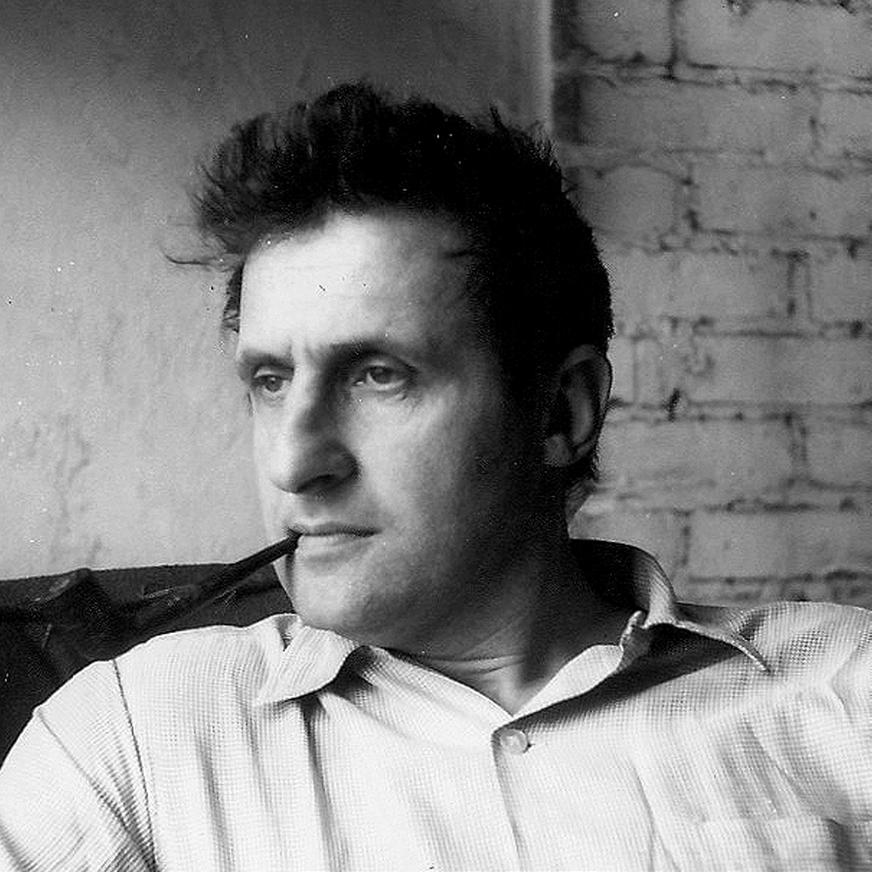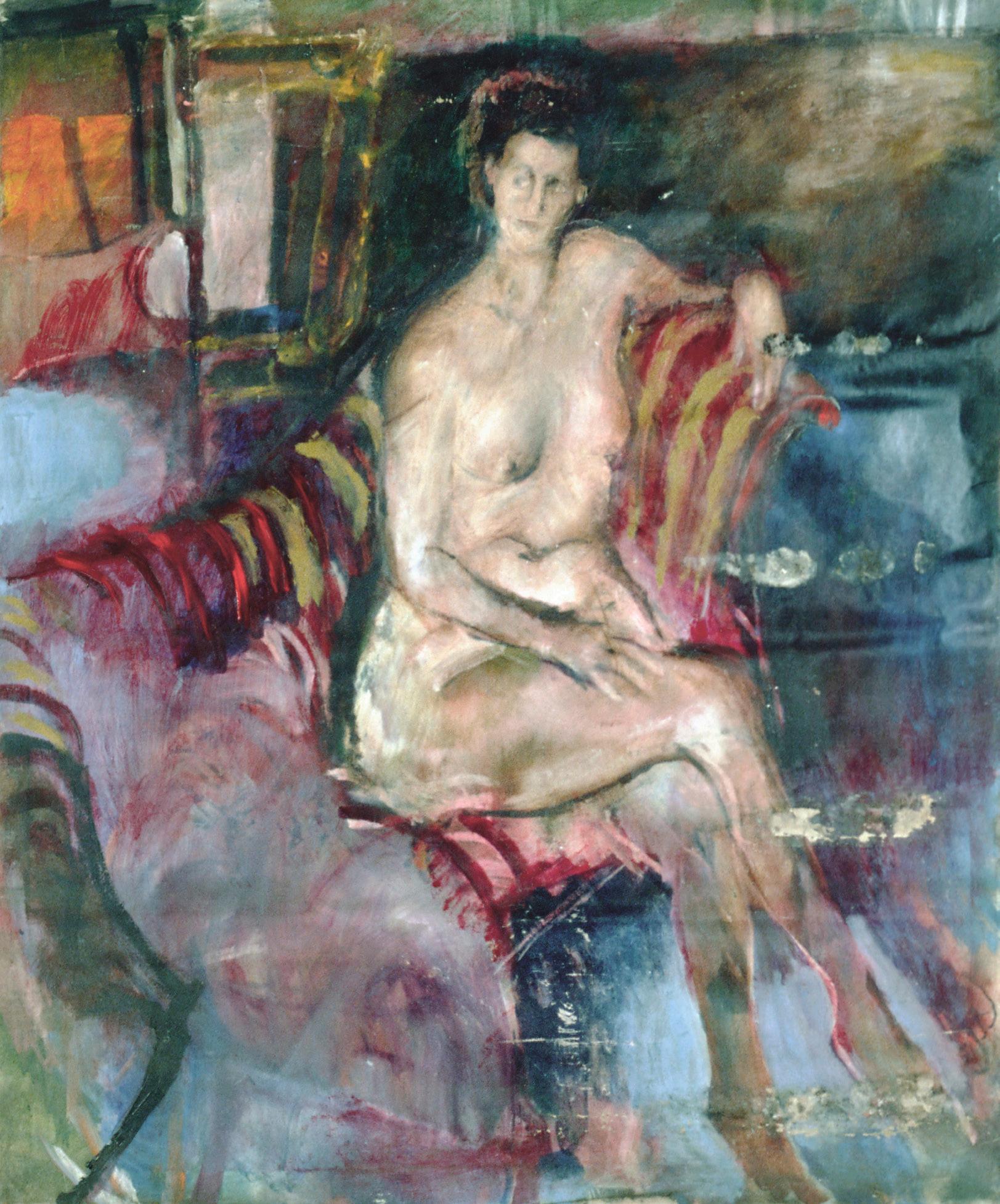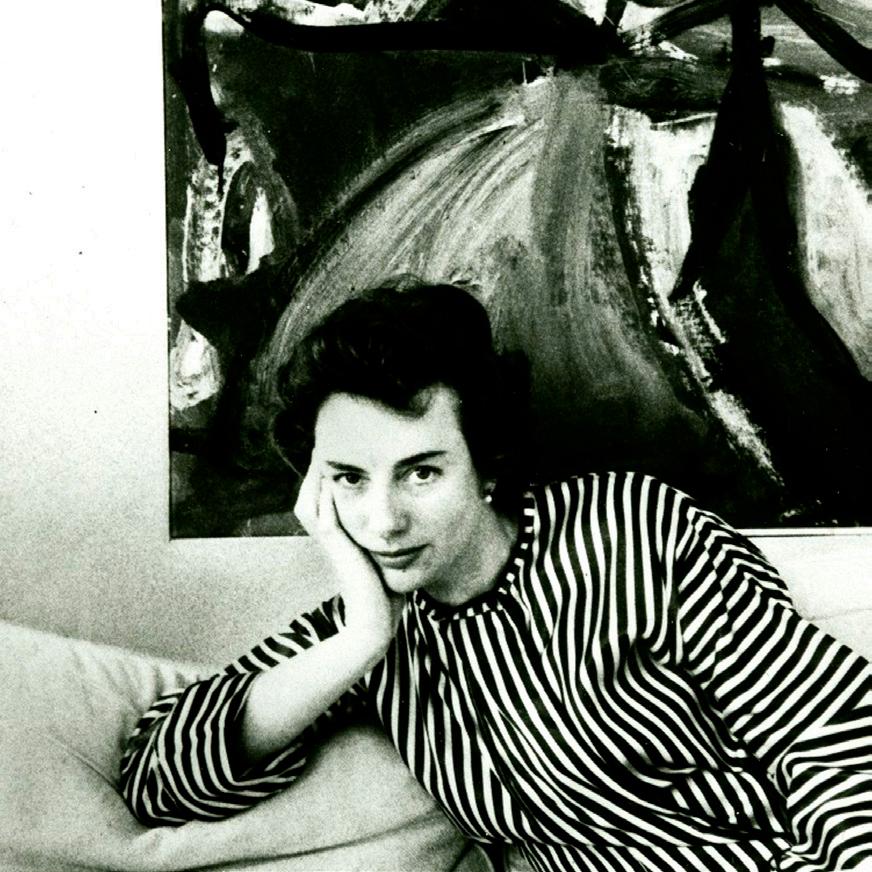
6 minute read
Robert De Niro, Sr
PAUL GEORGES
b. 1923, Portland, OR; d. 2002, Isigny-sur Mer, Normandy, France
Throughout his working life, Paul Georges explored figure painting, still life, landscape, self-portraiture, and group portraits with references to mythology, art history, and contemporary politics. He spent his career traveling between a farmhouse in Normandy, France, and downtown New York, and he was known to have shuttled his works-in-progress between both locations. A decorated World War II veteran, Georges studied, postwar, with Hans Hofmann in the United States. He also studied in Paris at the Académie de la Grande Chaumière and the Atelier Fernand Léger.
Georges’ paintings combine painterly French Modernism, Rococo exuberance, and New York street attitude. In the 1960s, he felt compelled to respond to the decade’s social and political turmoil, often in the form of large-scale history paintings. His first overtly political work was a modest study of JFK’s 1963 Dallas motorcade, and he continued to paint responses to contemporary trends and events, including the AIDS epidemic, as well as denunciations of religious extremism and urban homelessness. His political paintings were often the target of critical attacks from conservative critics, as he also combined them with allegories teeming with beautiful women floating naked in Tiepolo skies.
Among his many awards are the Whitney Museum of American Art’s 1966 Neysa McMein Purchase Award, and the National Academy Museum’s 1983 Andrew Carnegie Prize for the 158th Annual Exhibition, and its 1991 Gladys Emerson Cook Prize for the 166th Annual Exhibition. His work can be found in the permanent collections of the Museum of Modern Art and the Whitney Museum of American Art in New York City; the Smithsonian American Art Museum, Washington, DC; and the J. Paul Getty Museum, Los Angeles, California.
Selected Solo Exhibitions
2003: My Posthumous Series, Salander-O’Reilly Galleries, New York, NY 2000: The Big Idea: A Retrospective, Center for Figurative Painting, New York, NY 1996: New Paintings, Vered Gallery, East Hampton, NY 1885: William W. Crapo Gallery and Studio, Swain School of Design, New Bedford, MA 1983: College of the Mainland, Texas City, TX
Selected Group Exhibitions
2020: Figuration Never Died, Brattleboro Museum & Art Center, Brattleboro, VT 2016: The Cat Show, Worcester Art Museum, Worcester, MA 2001: Les Voluptés, Borusan Art Gallery, Istanbul, Turkey 1999: American Academy Invitational Exhibition of Painting & Sculpture, National Academy Museum and School of Fine Art, New York, NY 1994: Face to Face: Artists on Artists, Gallery Swan, New York, NY 1990: Regarding Art: Artworks about Art, John Michael Kohler Arts Center, Sheboygan, WI
Collections
Guild Hall of East Hampton, East Hampton, NY J. Paul Getty Museum. Los Angeles, CA Museum of Modern Art, New York, NY National Academy Museum, New York, NY Parrish Museum, Water Mill, NY Portland Art Museum, Portland, OR Rose Art Museum, Brandeis University, Waltham, MA Smart Museum, University of Chicago, Chicago, IL Virginia Museum of Fine Arts, Richmond, VA Weatherspoon Art Museum, University of North Carolina, Greensboro, NC Whitney Museum of American Art, New York, NY Smithsonian American Art Museum, Washington, DC
n

Lisette, 1958. Oil on canvas, 61½ x 50½ in. (156.2 x 128.3 cm). Estate of the artist. Courtesy © 2020 Paul Georges Foundation Inc., 85 Walker Street, NYC 10013.
n

Artist in Studio, 1963. Oil on linen, 80¼ x 70¼ in. (203.8 x 178.4 cm). Center for Figurative Painting, New York, NY.
GRACE HARTIGAN

b.1922, Newark, NJ; d. 2008, Baltimore, MD
Grace Hartigan claimed she became an artist almost against her will. “I didn’t choose painting. It chose me. I didn’t have any talent. I just had genius,”1 she said. At 19, she planned to move to Alaska with her husband, Robert Jachens, where they would live like pioneers. However, when her husband was drafted in 1942, Hartigan returned to New Jersey with her newborn and enrolled in the Newark College of Engineering, where she studied mechanical drafting and practiced it in an airplane factory to support her family while making watercolors on the side.
After graduation from Newark College, Hartigan took private painting lessons with Isaac Lane Muse. Through him, she was introduced to the work of Henri Matisse and to Kimon Nicolaïdes’ The Natural Way to Draw. 2 After moving to New York with her teacher, she quickly joined the downtown artistic community. Hartigan became interested in Abstract Expressionism after seeing Jackson Pollock’s drip paintings and later became close to the painter and his wife, Lee Krasner. Pollock and Willem de Kooning became her informal mentors.
In 1950, one of Hartigan’s paintings was selected by Clement Greenberg and Meyer Schapiro for the New Talent show at the Kootz Gallery. She had her first solo show the following year at the newly founded Tibor de Nagy Gallery, which also exhibited Helen Frankenthaler, Larry Rivers, and Jane Freilicher, all of whom became part of her circle. In 1958, Hartigan was named “the most celebrated of the young American women painters” by Life magazine,3 although during this time, she had briefly exhibited under the name George Hartigan in an attempt to achieve greater recognition for her work.4
From 1964 until the end of her life, Hartigan taught at what is now the Maryland Institute College of Art, while exhibiting widely. Though her early works were abstract, after 1952 she began incorporating recognizable motifs from sources ranging from Old Master images to shop windows. She continued to move between figuration and abstraction throughout her long career, concentrating on representation in her later paintings from the 1980s through the 2000s. Hartigan’s work is in the collections of most major American museums, including the Neuberger Museum of Art, Purchase, New York, and the Museum of Modern Art and the Whitney Museum of American Art in New York City. She is represented by C. Grimaldis Gallery, Baltimore, Maryland.
1 William Grimes, “Grace Hartigan, 86, Abstract Painter, Dies,” New York Times, November 11, 2018, https://www.nytimes.com/2008/11/18/arts/ design/18hartigan.html (accessed 14th January 2020). 2 Delia Gaze, Dictionary of Women Artists (Chicago: Fitzroy Dearborn Publishers, 1997), 644. 3 Grimes, “Grace Hartigan, 86, Abstract Painter, Dies.” 4 The Museum of Modern Art, https://www.moma.org/collection/works/78375 (accessed 14th January 2020).
Selected Solo Exhibitions
2013: Grace Hartigan (1922–2009): A Memorial Exhibition, C. Grimaldis Gallery, Baltimore, MD 1997: Hartigan’s Women, Paul Robeson Gallery, Newark, NJ 1993: Grace Hartigan and the Poets: Paintings and Prints, Schick Art Gallery, Skidmore College, Saratoga Springs, NY 1988: Gruenebaum Gallery, New York, NY 1975: William Zierler Gallery, New York, NY 1955: Vassar College Art Gallery, Poughkeepsie, NY
Selected Group Exhibitions
2020: Figuration Never Died, Brattleboro Museum & Art Center, Brattleboro, VT 2006–2007: New York School: Another View, Opalka Gallery, Albany, NY 1999: American Century, Part II, Whitney Museum of American Art, New York, NY 1995: Artist’s Choice—Modern Women, Museum of Modern Art, New York, NY 1993–1998: Hand-Painted Pop: American Art in Transition 1955–62, The Museum of Contemporary Art, Los Angeles, CA 1987: Color: Pure and Simple, Stamford Museum and Nature Center, Stamford, CT
Collections
Museum of Modern Art, New York, NY Neuberger Museum of Art, Purchase, NY Rose Museum, Brandeis University, Boston, MA St. Louis Art Museum, St. Louis, MO Wadsworth Athenaeum, Hartford, CT Walker Art Center, Minneapolis, MN Whitney Museum of American Art, New York, NY
n

Giftwares, 1955. Oil and charcoal on canvas, 63 x 811/8 in. (160 x 206 cm). Signed and dated lower right: “Hartigan ‘55.” Collection of Neuberger Museum of Art, Purchase College, State University of New York, Purchase, NY. Gift of Roy R. Neuberger, 1975.15.16.
n

Phoenix, 1962. Oil on canvas, 80 x 88 in. (203.2 x 223.5 cm). Collection of Hart Perry.








